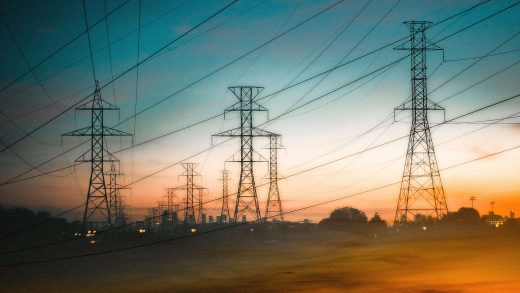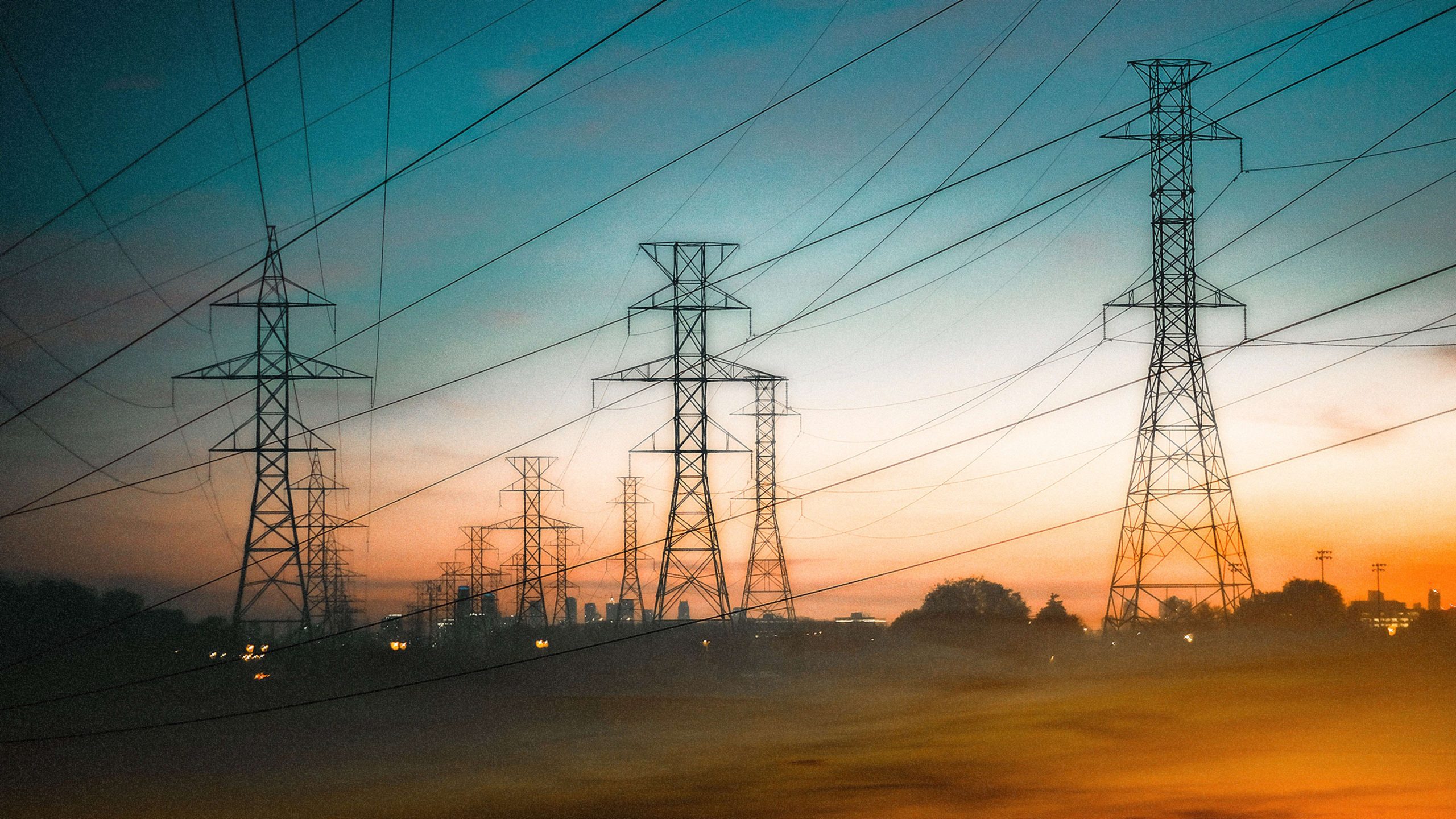How America can end energy insecurity and close the digital divide at the same time
How America can end energy insecurity and close the digital divide at the same time
Low income communities must be included in the clean energy push so that decarbonization goals don’t further fuel the poverty cycle.
The United States is making significant strides to mitigate carbon emissions, enlisting and incentivizing corporations and citizens. Laws have been passed, government-backed roadmaps have been set, and billions of dollars are now available in the hopes of curtailing the climate crisis. And what’s the key thread tying our nation’s decarbonization tactics together? Technology.
From virtual simulations of offshore wind farms to intelligent water heaters, the U.S. is championing commercial and residential applications of green technologies. This may be good news for Americans who can afford to buy EVs and install solar panels—and receive the subsequent tax credits. But what about the nearly 38 million citizens living at, or below, the poverty line who have historically suffered energy insecurity and have been largely impeded by the digital divide?
The answer to that question lies with public and private sector leaders. Government entities and companies—particularly energy and utility organizations—must work together to implement and invest in green-energy technologies and programs for underprivileged communities. If not, our decarbonization ambitions may only fuel the poverty cycle by making cost-effective clean energy and cutting-edge green-tech that much more unattainable for disadvantaged groups.
The state of energy poverty and digital inequality
Energy insecurity and limited access to modern technology have always existed among lower income groups in the United States. In recent years, these hardships have become pronounced and intertwined.
The cost-of-living crisis and energy price volatility, largely catalyzed by the COVID-19 pandemic and conflicts overseas, have left millions of citizens struggling to afford basics, like utility services. Due to economic constraints, most of the low-income population are renters. This means they often don’t have the right to upgrade appliances and utility systems to make their homes more efficient and sustainable and decrease their expenses.
The inability to update utility equipment, lighting, insulation, and appliances, as well as purchase clean energy solutions like solar panels, not only perpetuates financial instability and digital disparities, but it can also create health risks as low-income homeowners are faced with difficult decisions—pay their energy bills or buy food, medicine, or other essentials.
Sustainability success stories
Energy poverty and the disparities in residential solutions present a formidable challenge for government officials and corporate leaders. Numerous local, state, and federal government entities have passed laws to address energy insecurity and ensure disadvantaged Americans aren’t burdened by our net-zero ambitions.
Cities and utilities are leading the way and exemplifying how the U.S. can address energy affordability on a smaller scale. Cambridge, Massachusetts, instituted a progressive Net Zero Action Plan nearly a decade ago, which largely focuses on decarbonizing buildings to achieve the city’s net-zero ambition. In Denver, the city’s housing authority launched a community solar garden for its low-income residents in 2017—the nation’s first solar garden that’s developed, owned, and operated by a housing authority. And New York City has also instituted several programs, including the NYC Retrofit Accelerator and the blockchain-enabled Brooklyn Microgrid.
In Los Angeles, Southern California Gas Company offers several low-income programs and offerings ranging from flexible payment plans, lower rates, housing improvements, and energy-efficient appliances. Capgemini collaborated with SoCalGas to support their Energy Savings Assistance Program, including initiatives to facilitate community outreach for low-income renters and homeowners and retrofits for methane detection in restaurants.
Advancing equitable energy
These efforts have undoubtedly improved the lives of thousands of Americans, but they’re just initial milestones on the country’s long road to energy equity and decarbonization. The public and private sectors must both do more if we hope to end energy insecurity for nearly one in eight Americans who are living in poverty.
Public-Private Collaboration Policies
Local, state, and federal governments should implement more policies that promote renewable energy adoption, energy efficiency, and green technologies—aimed more specifically at low-income groups. It will be key to provide additional subsidies or tax incentives for low-income households and for landlords to install solar panels, energy-efficient heating systems, and insulation to reduce energy consumption and costs. These residential green technologies won’t just help underprivileged Americans reduce their carbon emissions, but they’ll also cut their energy costs by driving efficiencies.
On-bill financing and repayment, flexible payment, and energy efficiency programs must also expand in size and scale. Recently, an electric utility, a distribution co-op, and a nonprofit, state-run green bank in Colorado launched an on-bill repayment program. It’s geared toward low-come and rural households and small businesses and offers low interest rates, along with no money up front and no credit check.
However, these government-backed programs will only be successful if stipulations aimed at the broader energy and utility sectors continue to be included in local, state, and federal mandates—whether that be financial incentives, like tax breaks and green bond programs, or penalties. And on the other hand, these programs can only be successful if legislators continue to collaborate with private sector leaders needed to help their economically disadvantaged consumers.
It will take great compromise and collaboration to see such continued change. Utility leaders must adapt their business models not only in accordance, but in anticipation, of energy security-related legislation. And governmental leaders must call upon more private sector leadership to join advisory councils and agency boards—as well as serving as energy insecurity advisors and board members for private companies.
Community Engagement
Community solar programs and energy cooperatives will also play a larger role in providing much needed clean energy sources and economic relief. There are countless examples of such community programs throughout the country—like a flexible payment program for solar energy run by an independent power producer and electric co-op in Tennessee.
However, equally important are utility-run outreach programs to educate low-income customers on energy conservation, efficient appliance usage, and available assistance programs. In South Carolina, one of the country’s largest utilities has enhanced its customer engagement tactics following the economic impacts of the pandemic. The utility company now regularly shares updates on things like state and federally funded assistance programs, payment plans geared towards lower-income households, and energy usage tracking services.
Similarly, it’s essential to invest in skills development programs for green jobs that empower low-income individuals to participate in the growing renewable energy and energy-efficiency sectors. And as the green economy is outpacing the amount of green talent, these training programs offer a solution to not only address climate change, but help end poverty. One building electrification startup is doing just that—training unemployed and underemployed groups in everything from EV charging installation to HVAC contracting.
Government entities and businesses must also prioritize community input and establish channels for continuous feedback from low-income families. Their experiences and suggestions can provide valuable insights for refining existing programs and developing new solutions.
Tech Implementations
As technology is central to energy equity, the public and private sectors should increase investments in key digital solutions blockchain-based smart contracts, for example, can enable transparent energy trading and reduced energy costs by driving efficiencies in peer-to-peer trading. These solutions and offerings are new to the market and, as such, it will be in the best interest of energy and utility companies—and even government agencies—to partner with green tech startups that have the knowledge and tools to enable inexpensive, digitally driven clean energy.
ABOUT THE AUTHOR
(34)



